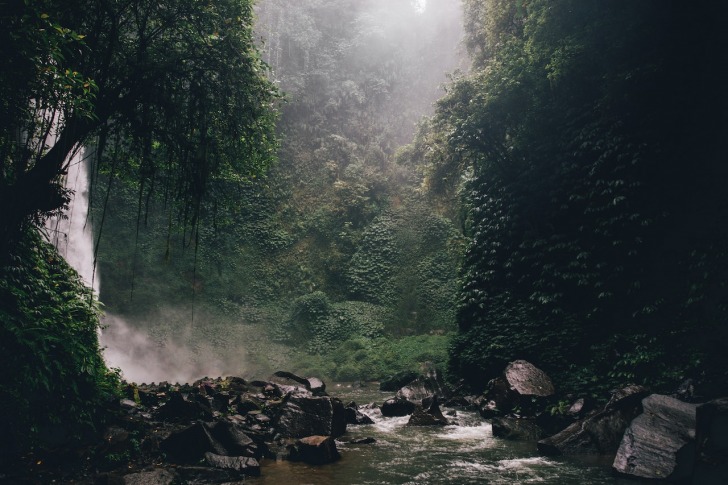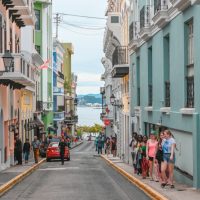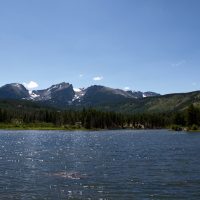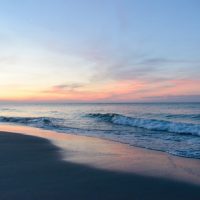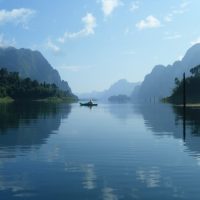Any body of water in Florida could have alligators, and T. Mabry Carlton, Jr. Memorial Reserve is no exception.
Moreover, alligators enhance the area.
Alligators are keystone species and alter their surrounding environment to make it more suitable for their use.
For example, they will dig holes in the marsh as deep as 65 feet, providing catch basins for rainwater.
As a result, their effects on the landscape increase available freshwater sources during dry spells.
Contents
- So, Are There Alligators in the Carlton Reserve?
- Alligator Species Living in T. Mabry Carlton, Jr. Memorial Reserve
- Is it Safe to Swim in the Carlton Reserve?
- Safety Tips for Swiming in Alligator-Infested Waters
- Exciting Facts About Alligators in Carlton Reserve
- Florida’s Alligators and Hurricanes
- Alligators Versus Crocodiles Versus Caiman
- Summary
- Frequently Asked Questions
So, Are There Alligators in the Carlton Reserve?
You will encounter alligators anywhere you find water or sunny places near the water’s edge where they can bask.
Alligators appear so frequently that the Reserve’s Welcome brochure includes them in the list of commonly-seen wildlife in the park.
Thanks to their presence, you will also find a photo of a Carlton Reserve alligator in the far-left column.
The T. Mabry Carlton, Jr. Memorial Reserve lies in the Myakka River floodplain, 20 minutes northeast of downtown Venice, Florida, at the southwest corner of Myakka River State Park.
The park serves as the source of Sarasota County’s drinking water. In addition to alligators, the Reserve’s 24,565 acres provide homes for sandhill cranes, Florida panthers, bobcats, and swallow-tailed kites.
The presence of alligators in Carlton Reserve signifies a low level of pollutants in the water because alligators favor clean freshwater sources.
Also, while protecting their nests from raccoons, opossums, lizards, and snakes, T. Mabry Carlton Junior Memorial Reserve alligators aid migratory birds, turtles, and wading birds in their nesting habits.
Surprisingly, sandhill cranes and other birds often nest directly above alligators.
Despite the alligators sometimes deliberately whacking the trees where the birds have built their nests to eat any falling chicks, the decision to nest above alligators benefits the bird population by preventing raccoons and opossums from reaching the sandhill crane’s eggs.
Although 90 percent of a Florida panther’s diet consists of deer, raccoon, armadillo, and feral pigs, they will eat alligators on rare occasions.
Additional alligator predators include Great Blue Heron, fellow alligators, and humans.
In addition, trail cameras in the Carlton Reserve have recorded what appear to be red wolves or coyotes, both of whom enjoy snacking on eggs when they can find them.
Alligator Species Living in T. Mabry Carlton, Jr. Memorial Reserve
Only two species of alligator remain in the world, and you’ll find Alligator mississippiensis, the American alligator, here at the Reserve.
Once endangered, American alligators have made such a wildly successful comeback that more than 1.25 million of these reptiles call the state of Florida their home as of September 2022.
The other remaining world alligator species, Alligator sinensis, lives exclusively in China, near the mouth of the Yangzte River, in the wild.
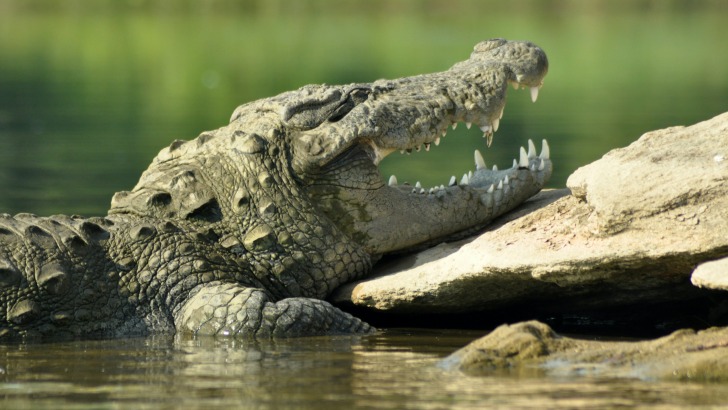
Is it Safe to Swim in the Carlton Reserve?
Although the park’s website lists canoeing and kayaking, it does not list swimming as an activity.
In addition, many of the alligators seen throughout the Carlton Reserve have reached sizes of 10 feet and longer, making them capable of killing and eating deer or larger animals.
Deaths from alligator attacks throughout Florida have included people aged two to 92 and involved alligators six feet long and over.
Better not to take the risk than wind up a tragic statistic.
Unprovoked alligator attacks in Florida have increased from three per year to ten per year, according to Diario AS.
The most recent alligator attack in Venice, Florida, happened on the campus of State College of Florida Manatee in Sarasota in March 2022.
A visitor to the college allowed her 50-pound pit bull to run off-leash when an alligator dragged it into nearby Lake Jerzy.
A few days passed before trappers from the Florida Fish and Wildlife Conservation Commission’s Nuisance Alligator Program pulled two reptiles from the lake.
One measured six feet, nine inches long, while the second measured seven feet, ten inches.
If you need to report an alligator threatening pets or humans, call the toll-free nuisance alligator hotline: (866) 392-4286.
Keep in mind, however, that just because you see an alligator does not make it a nuisance.
Only if it approaches you, your children, or your pets can you consider it a nuisance alligator.
Likewise, defending its nest or moving from one water source to another, even a swimming pool, does not make it a nuisance alligator.
So get used to seeing it where it lives and do not harass or feed it.
Killing, injuring, or capturing an alligator, crocodile, or caiman or taking its eggs without authorization from the Florida Fish and Wildlife Conservation Commission constitutes a third-degree felony.
Any weapons, vehicles, boats, or gear used to kill or capture unauthorized animals can and will be confiscated and sold unless owned by someone other than the hunter/trapper.
Safety Tips for Swiming in Alligator-Infested Waters
If you insist on swimming in alligator-infested waters, do so only under the following conditions:
- NEVER Swim after dusk or before dawn.
- NEVER SWIM ALONE! Always have a buddy with you.
- NEVER mix alcohol and alligators. Drinking reduces or eliminates your ability to understand the danger you face when you decide to swim with alligators.
- NEVER FEED ALLIGATORS! It reduces their reluctance to approach humans and makes them associate humans with food.
- Leave the water quickly and calmly if you think you see an alligator. RUN at least 30 to 50 yards away in a straight line, and do not return.
- NEVER let pets go off-leash near places where alligators live.
- Do not use retractable leashes near alligators. Your pet can wander too far from you, and the leash could wrap around your arm or leg, allowing the alligator to drag you into the water to drown.
- NEVER allow children to go unsupervised near alligators. Children must be beside you or in your direct line of sight at least 30 yards from any alligator.
Exciting Facts About Alligators in Carlton Reserve
Surprisingly, alligator babies can drown while still in their eggs.
Consequently, any flooding in early spring could drastically affect alligator numbers the following year.
Alligator mothers will look for dry ground, leading to alligator sightings on land.
For this reason, you might even spot one while hiking the more than 100 miles of trails through the T. Mabry Carlton, Jr. Memorial Reserve.
Follow the advice of the late former President, Teddy Roosevelt, and carry a big stick.
If needed, you can whack the alligator sharply on its snout if it comes toward you.
Then immediately run away for at least 30 to 100 yards in a straight line, not a zigzag as many people mistakenly believe.
Mother alligators hiss if you approach their babies.
When you hear that hiss, leave the area, and the mother alligator will aggressively defend her nest and her chosen nursery pool for up to two years, so do not return to that site for any reason.
If you hear a sound that resembles a low-pitched, drawn-out belch a drunken frat boy might make at a keg party, it’s a bull alligator during mating season.
If you hear that sound, turn around and run back the same way you came.
DO NOT STOP RUNNING until you no longer hear the alligators.
Florida’s Alligators and Hurricanes
Although adult alligators weather significant storms such as Hurricane Ian by hiding, younger alligators often drown or get swept out to sea in coastal areas.
Being swept away from their parents puts juveniles at significant risk and leads to unacceptable population losses for subsequent years.
In addition to any bird losses from the storm, fewer alligators will mean less protection for next year’s nestlings.
Without insect-eating birds such as the split-tailed swallow, mosquitos breeding unchecked will spread encephalitis and the West Nile virus.
Hurricanes cause many alligators to move to another area, putting them at odds with the alligators already inhabiting that body of water.
It also puts them in closer contact with humans and leaves pets and livestock vulnerable during hurricane cleanup.
With nowhere to go and no nesting site to return to, many alligators become meals for more aggressive residents.
The loss of adult alligators from fighting for new territory or being killed for becoming nuisances leaves fewer alligators to breed in subsequent seasons.
Alligators Versus Crocodiles Versus Caiman
Florida has alligators, crocodiles, and caimans living together throughout the state.
The T. Mabry Carlton Junior Reserve lies within a flood plain, so you will sometimes spot all three giant reptiles.
To tell them apart, remember that crocs have a visible fourth tooth in their jaws, while alligators do not.
Caimans are smaller and shorter than alligators and crocodiles, including the length of their v-shaped snouts.
Crocodiles also have v-shaped snouts, with longer heads than either alligators or caimans.
Alligator heads feature a u-shaped nose and a bony eye ridge.
Like alligators and crocodiles, caiman mothers protect their nests. Mother caimans also help their babies hatch.
Like alligators and crocodiles, caiman mothers take unhatched eggs to the water’s edge, carefully crack the shells until they fall away, and pierce the inner membranes to free their young.
Once free, the mother caiman opens her mouth to release her babies into the water for their first swim.
Baby caimans make a sound that resembles a puppy whining.
For that reason, mother caiman knows where to find her young in the mud and grass hummock she built before she laid them.
Alligator and crocodile babies make similar noises.
Summary
Alligators live in Carlton Reserve precisely like they do all over the rest of Florida.
With more than 24,000 acres to choose from, alligators live throughout the park, and you might see one on the park’s numerous hiking paths.
Harming or capturing an alligator or its eggs is a third-degree felony in Florida, so call the toll-free statewide nuisance alligator hotline to report them rather than doing anything to them yourself.
Also, leave alligator nests alone and never allow pets to go off-leash or approach the water’s edge, especially at dusk or dawn.
Listen for hissing or bellows and leave the area immediately if you hear either sound.
Frequently Asked Questions
How many people die every year from alligator attacks?
Up to ten people per year die in Florida alligator attacks.
How do I report a nuisance alligator?
First, call the toll-free nuisance alligator hotline: (866) 392-4286.
Can I swim in the Carlton Reserve?
Unfortunately, the list of park activities on their list does not include swimming.
Does the Carlton Reserve have alligators in it?
Yes, it does have alligators.
Where will I find the T. Mabry Carlton, Jr. Memorial Reserve?
The T. Mabry Carlton, Jr. Memorial Reserve lies in the Myakka River floodplain, 20 minutes northeast of downtown Venice, Florida, at the southwest corner of Myakka River State Park.
What is the full name of the Carlton Reserve?
The park’s official name is the T. Mabry Carlton, Jr. Memorial Reserve.
